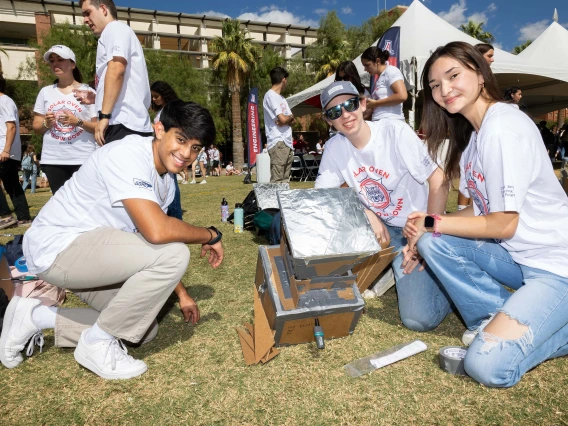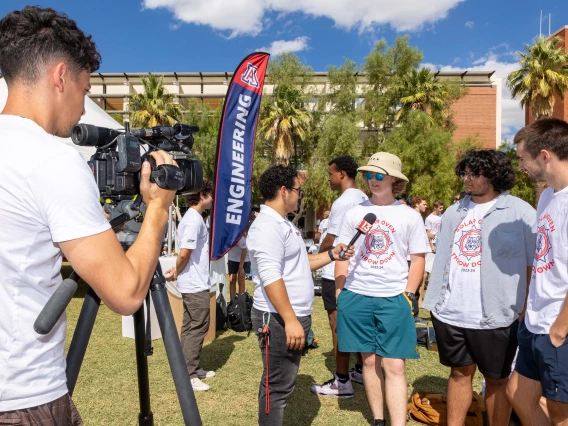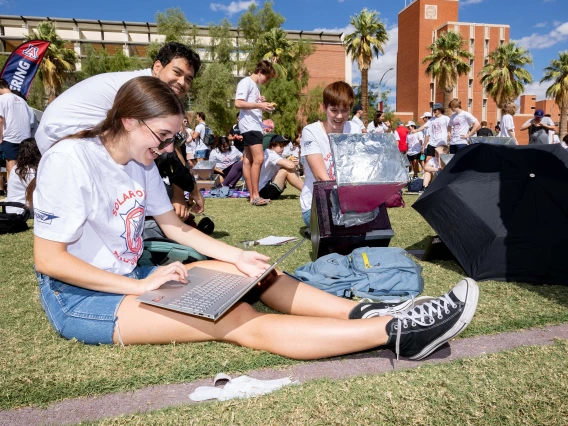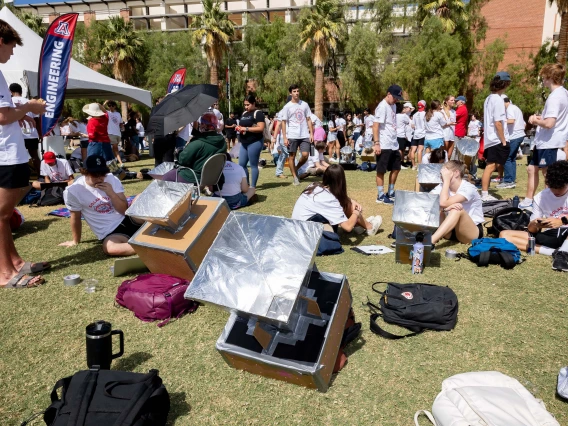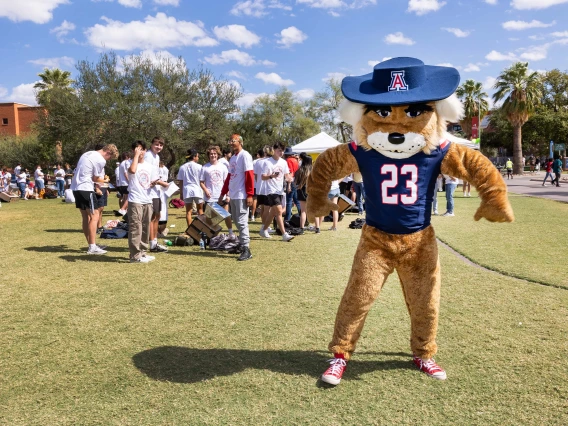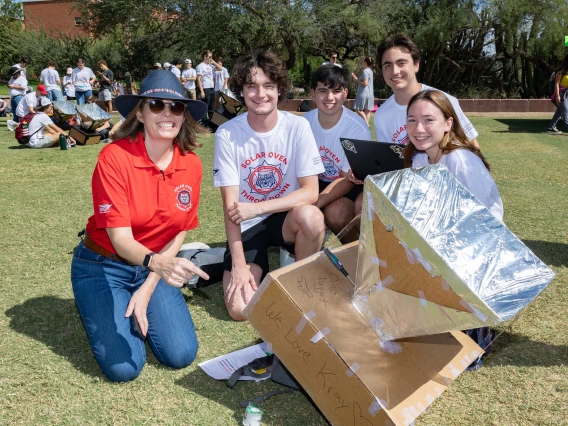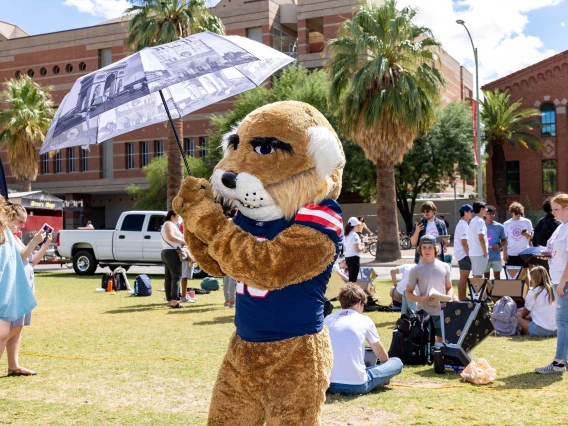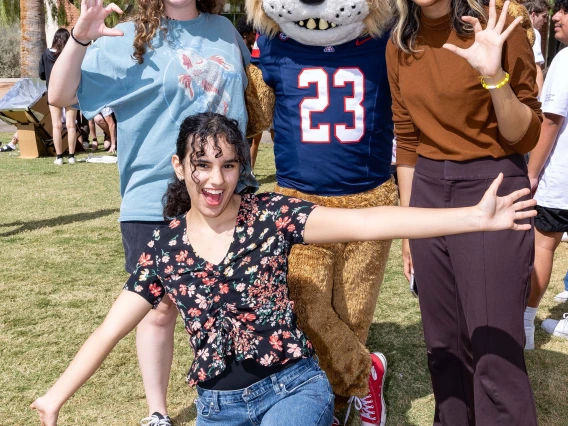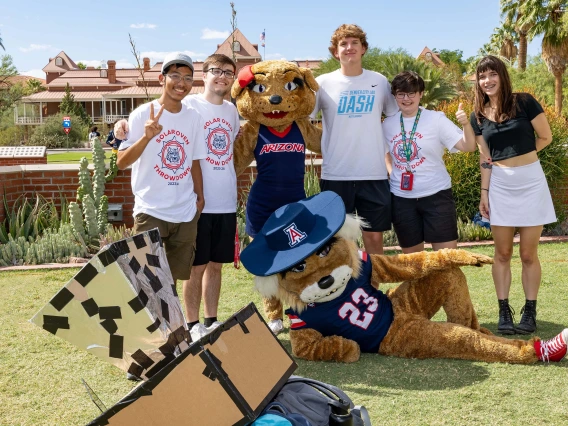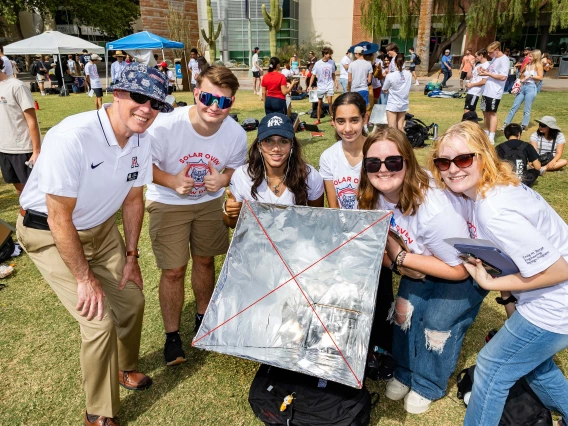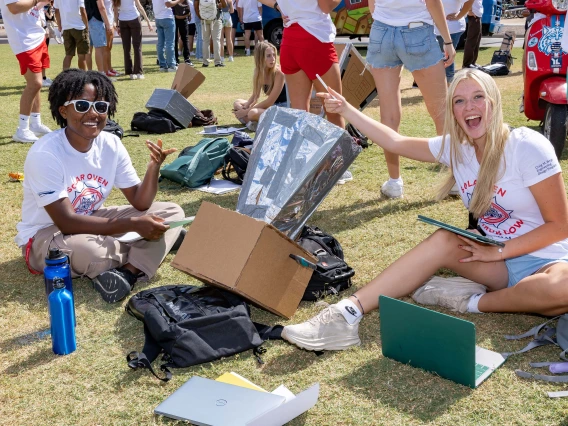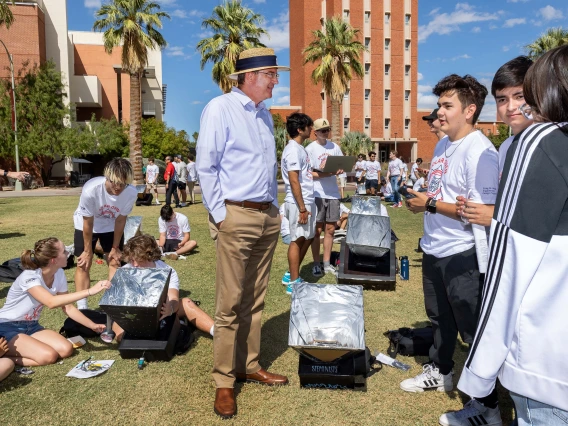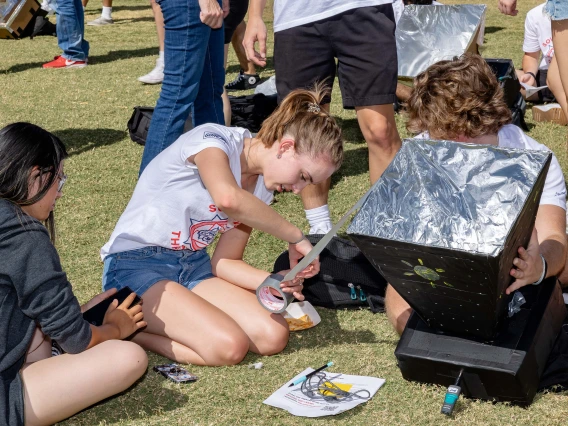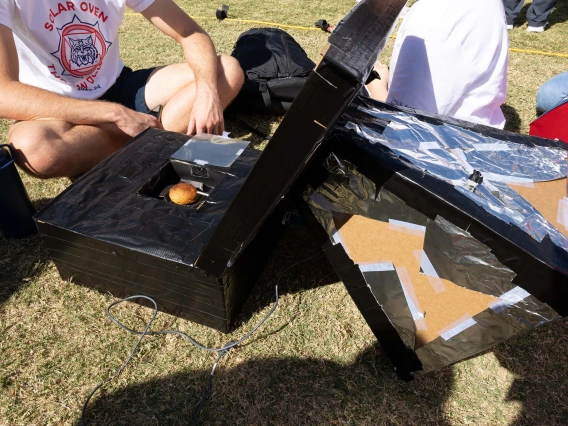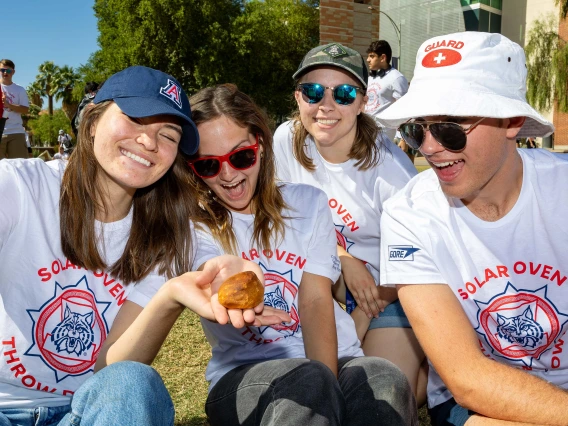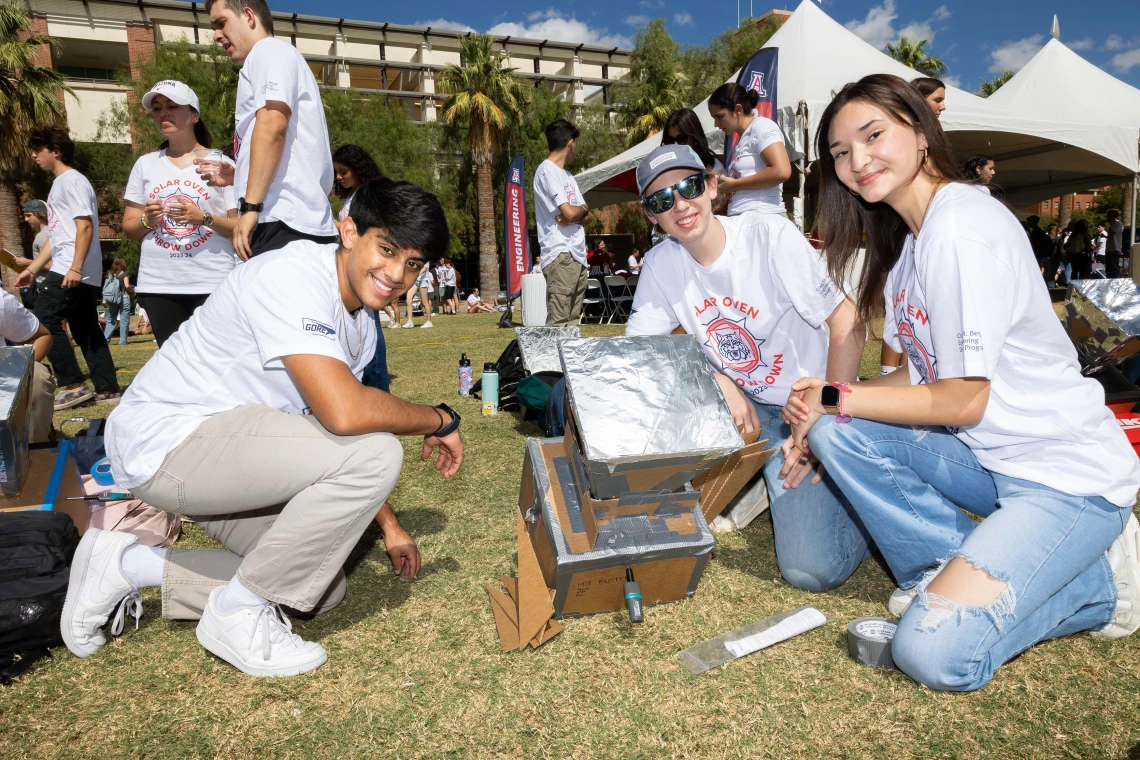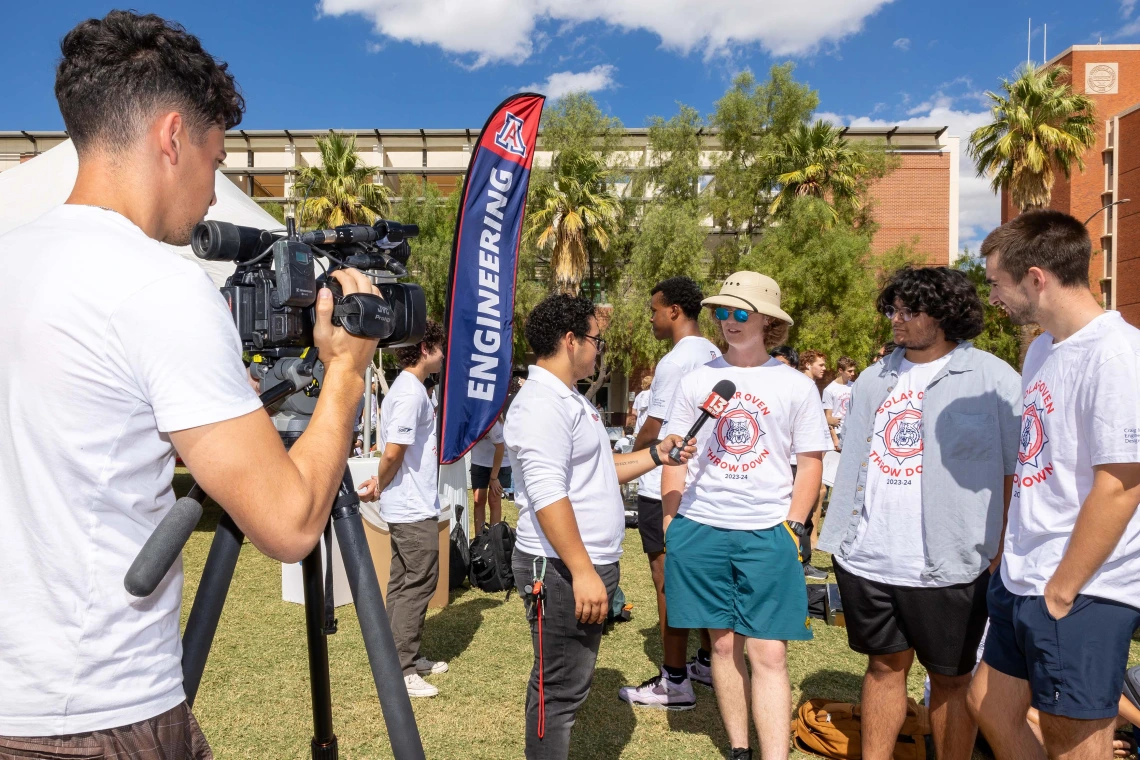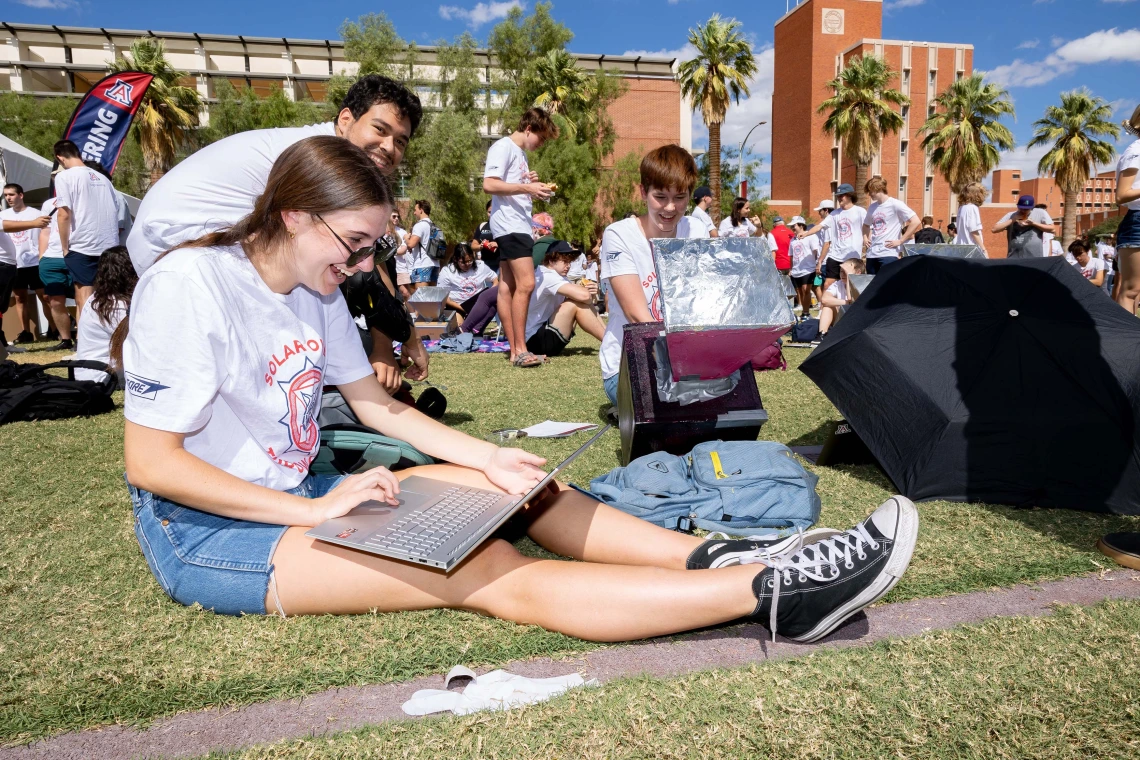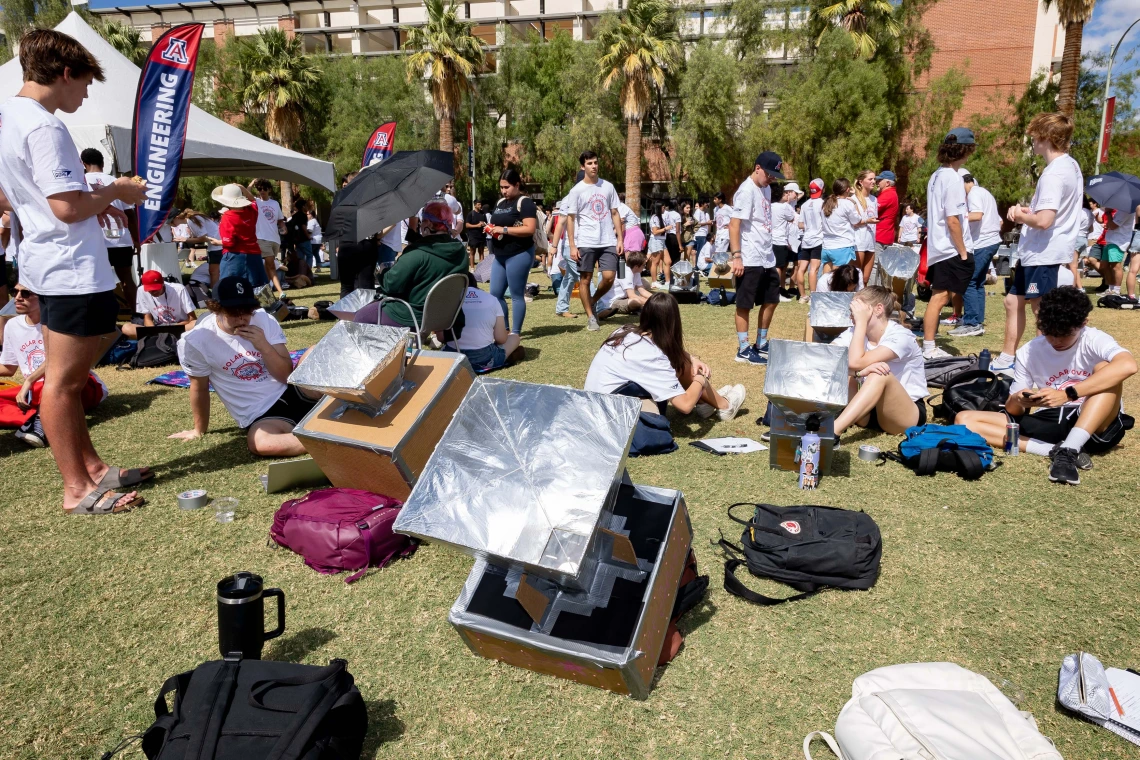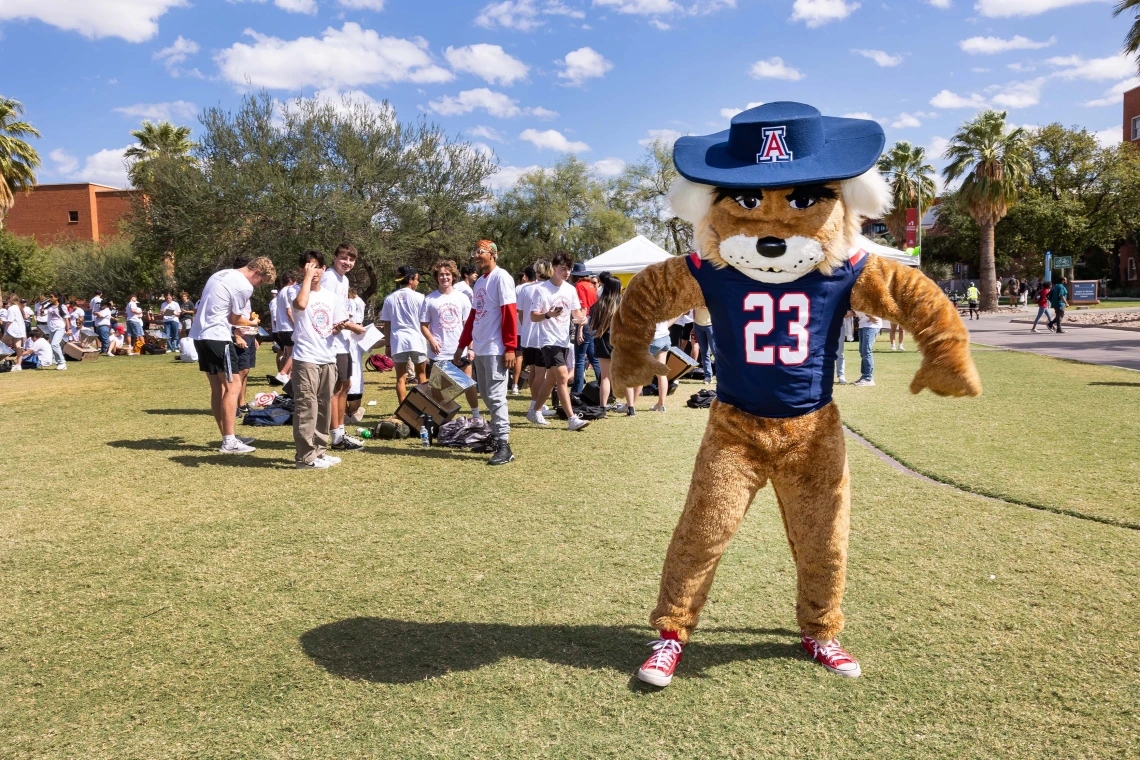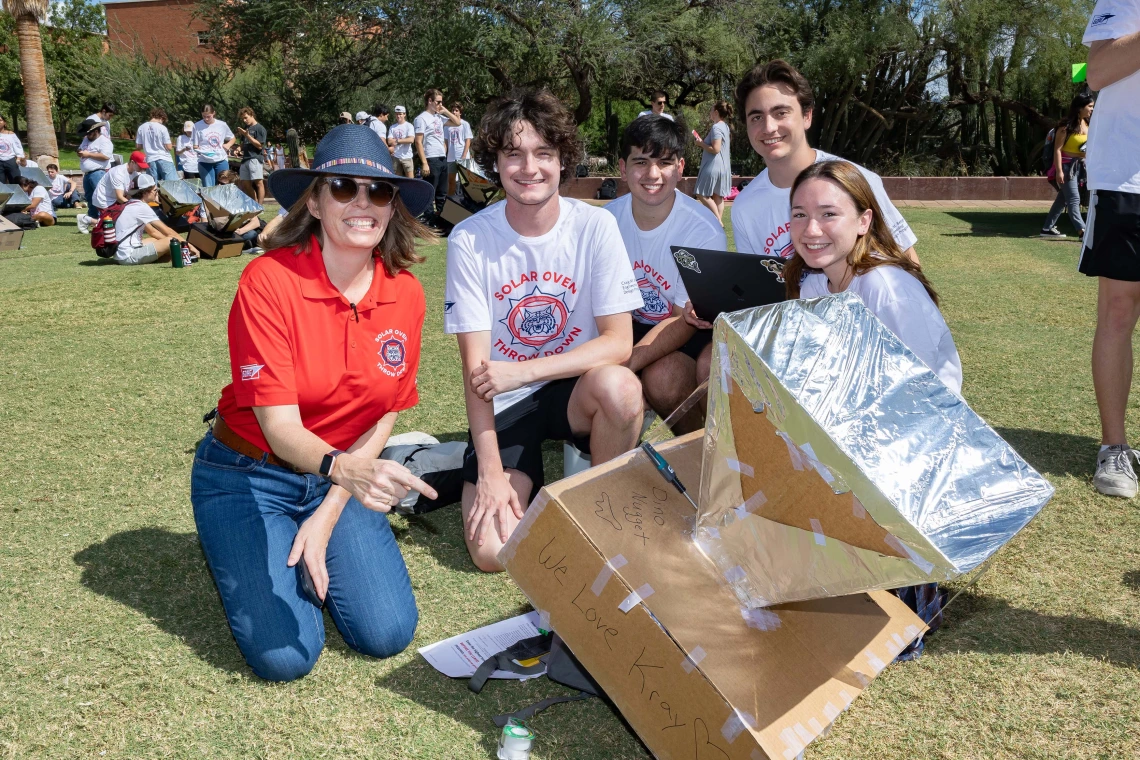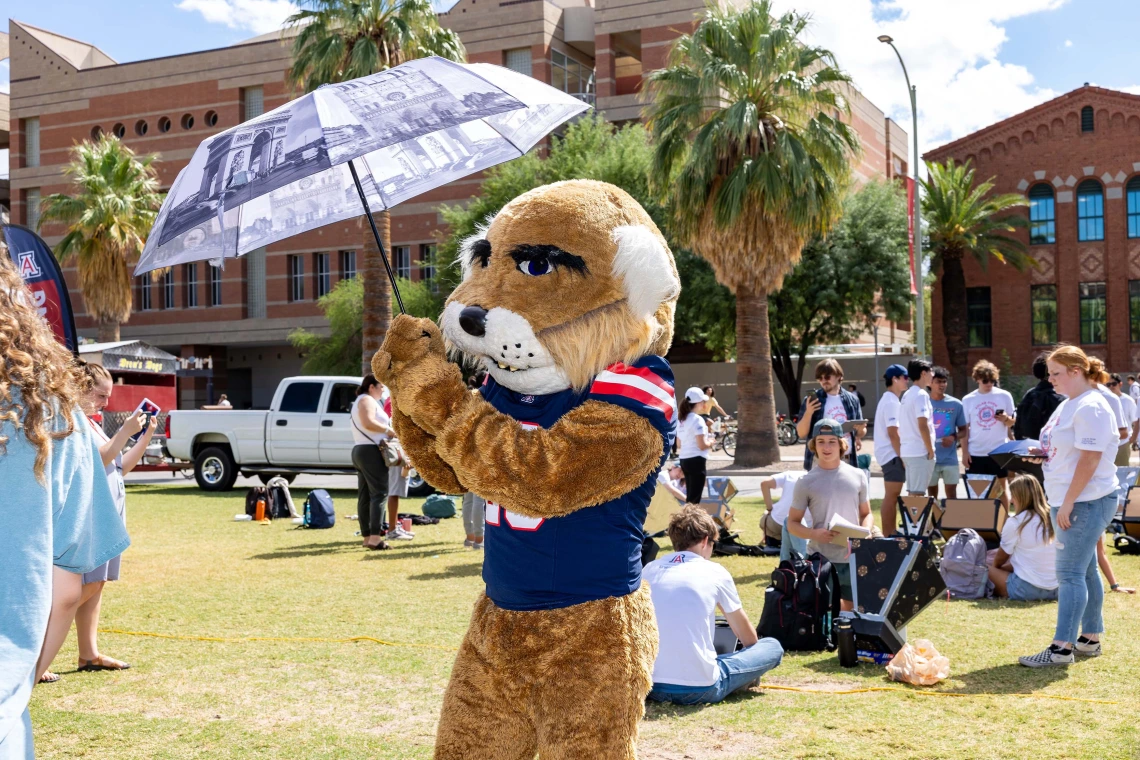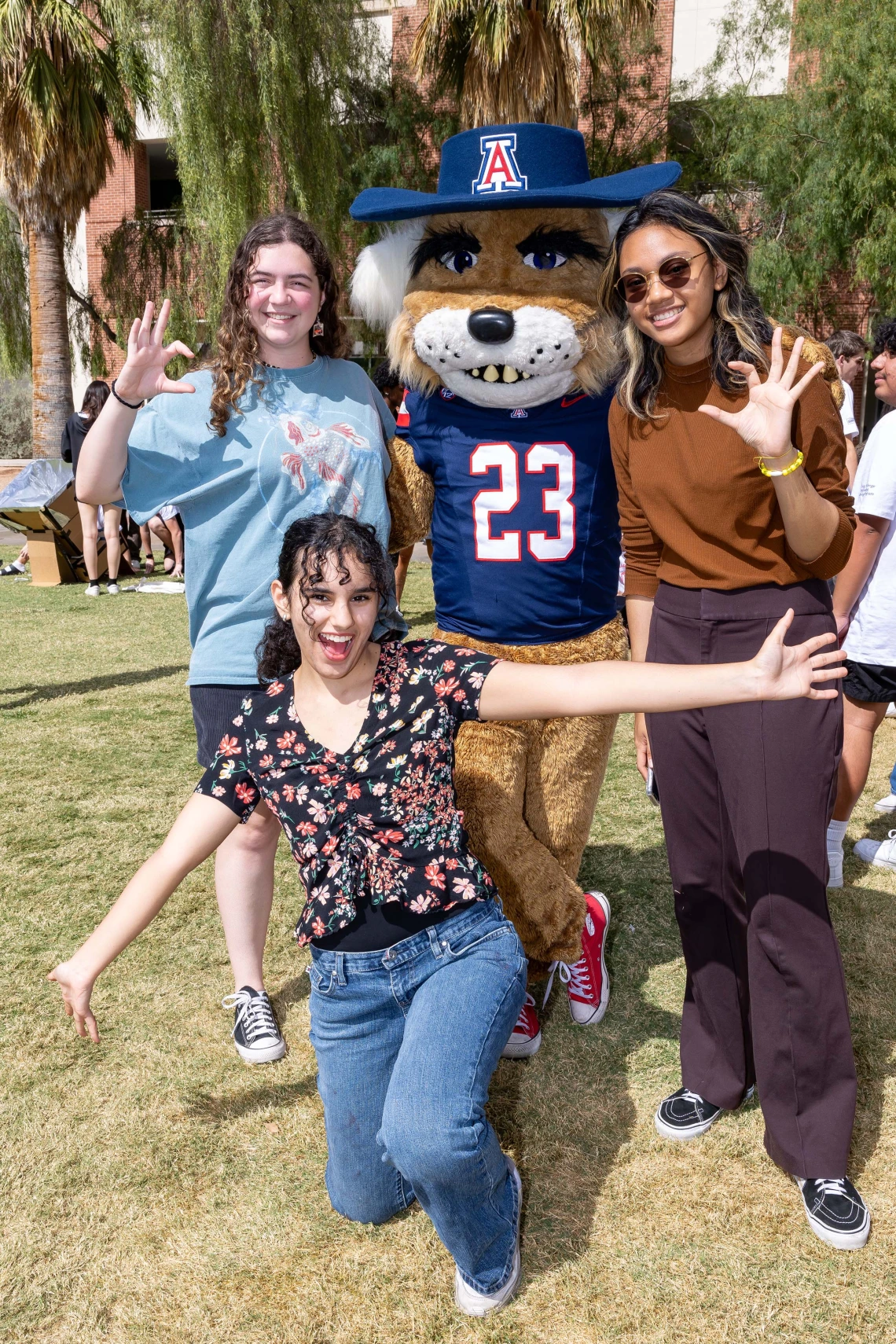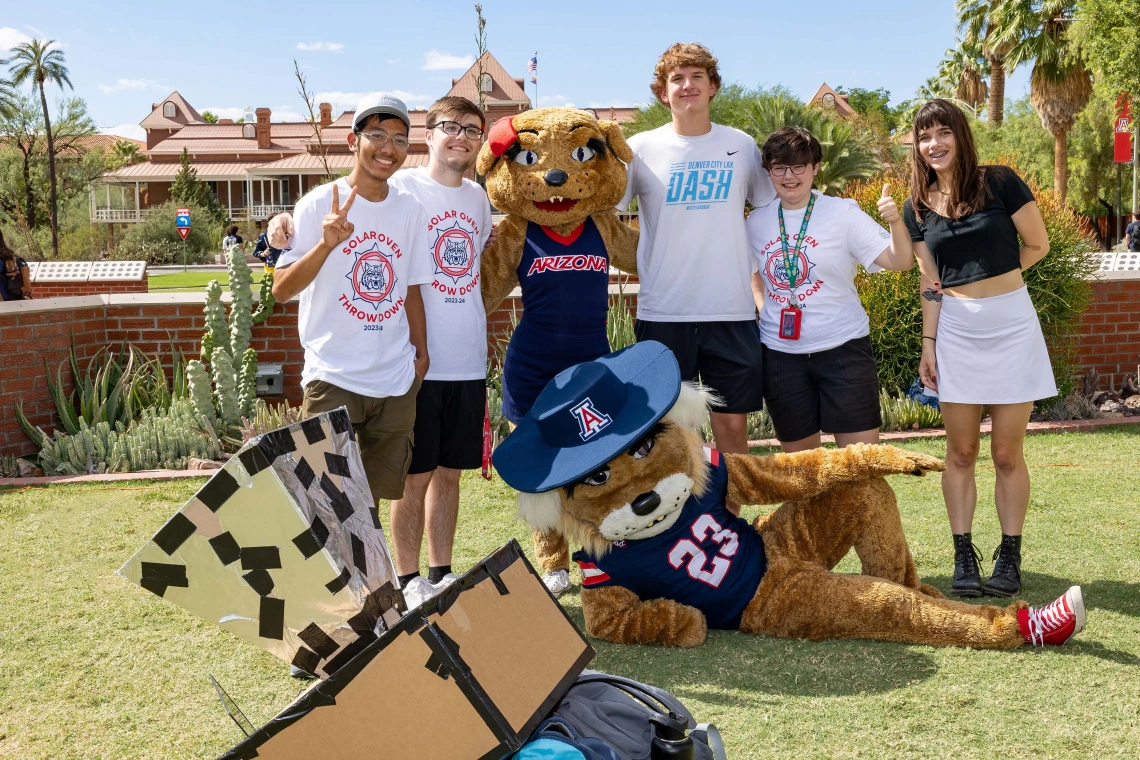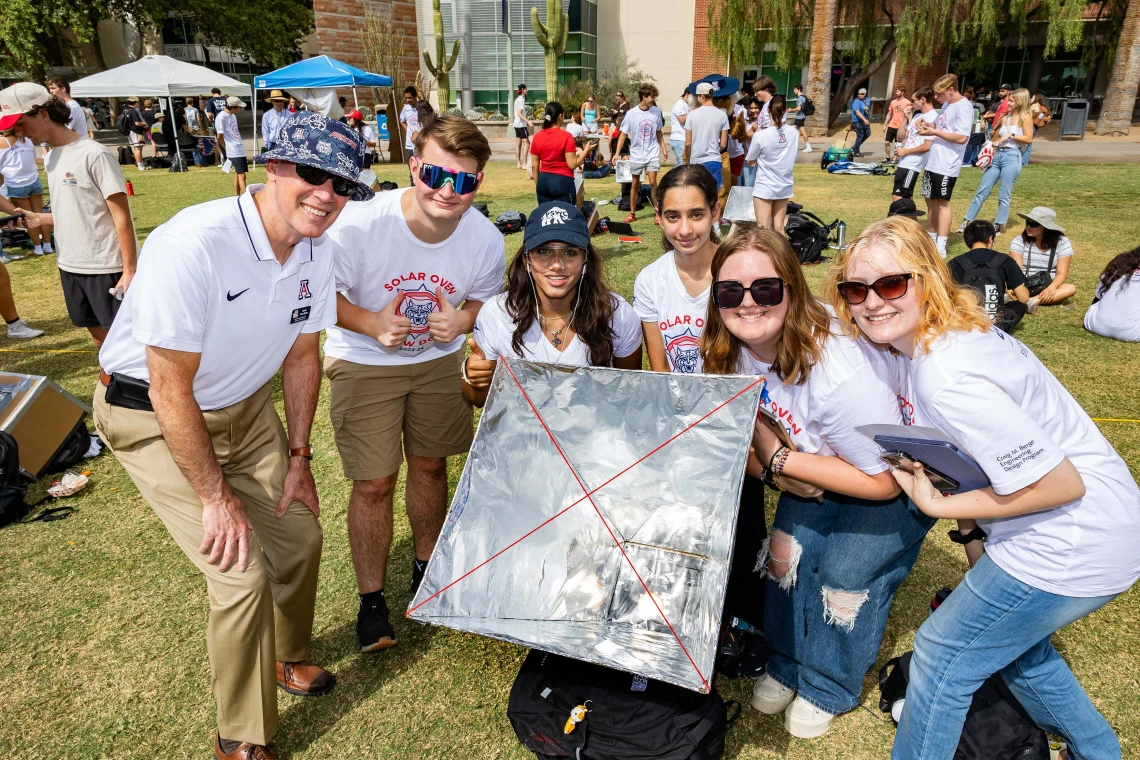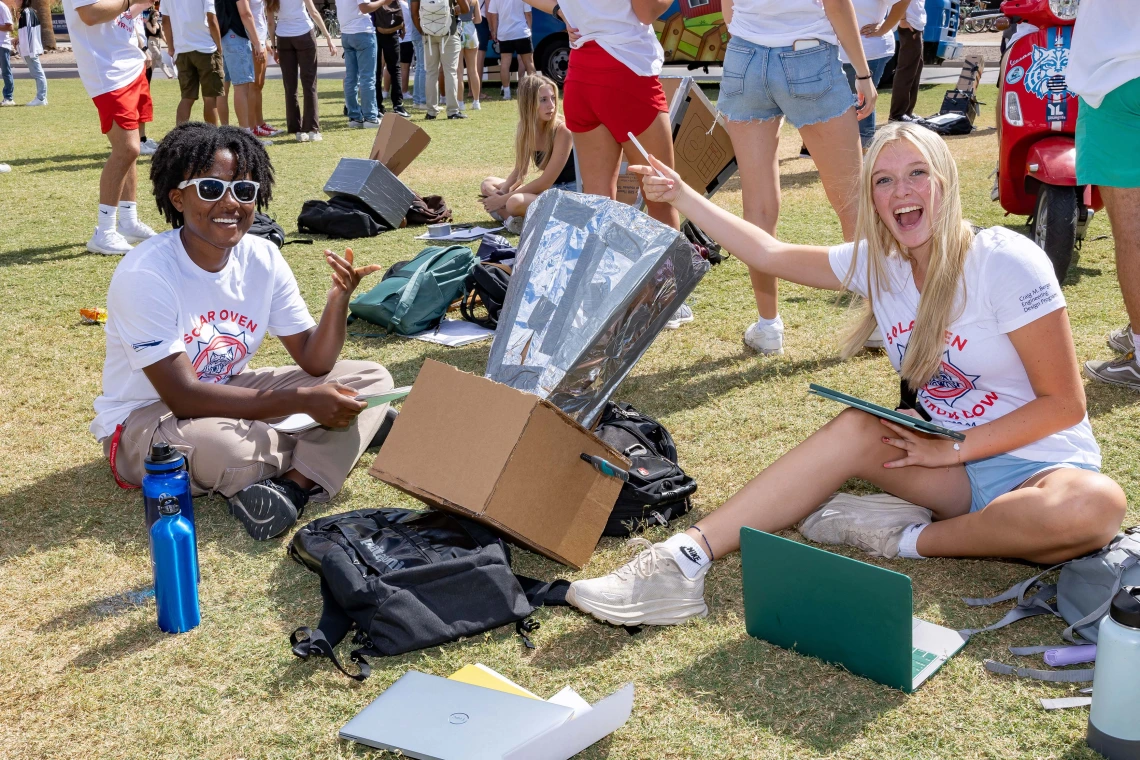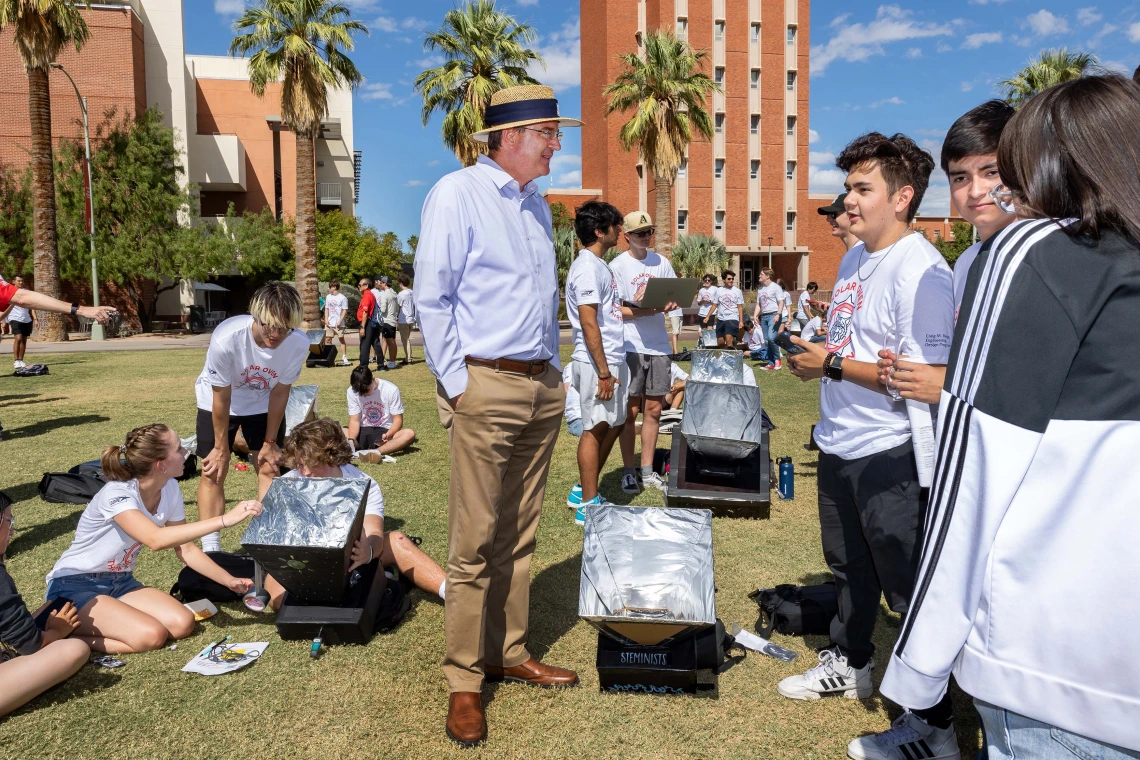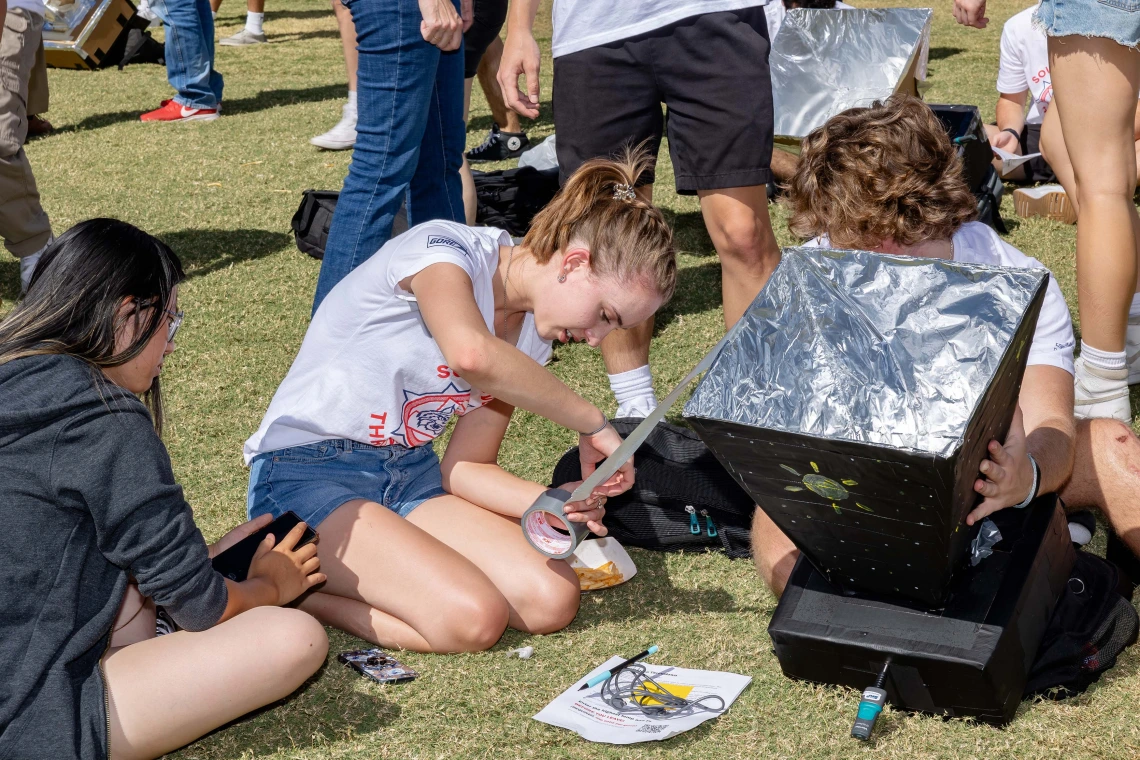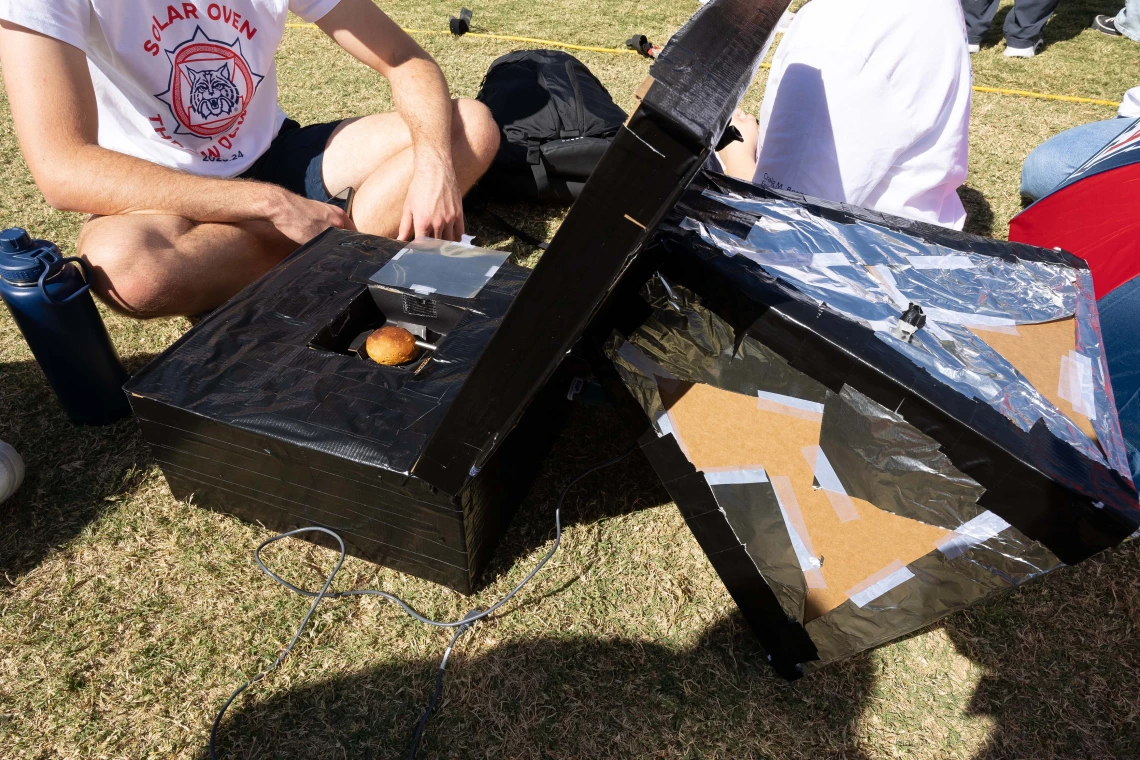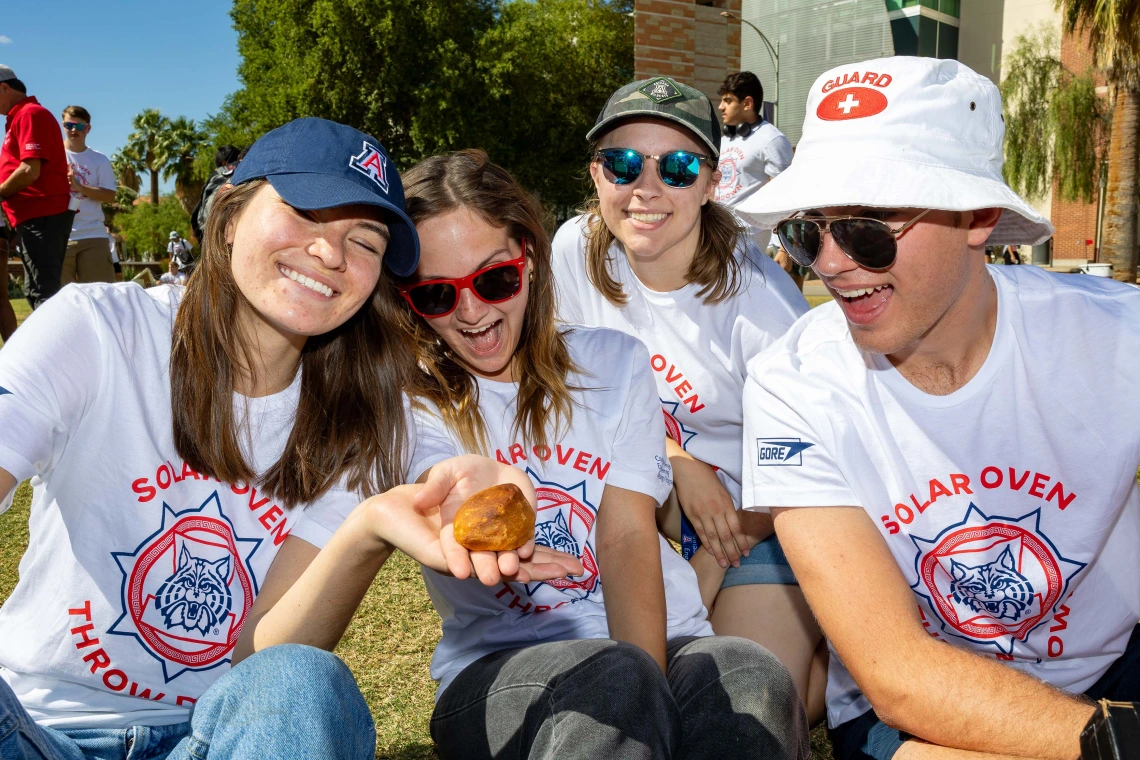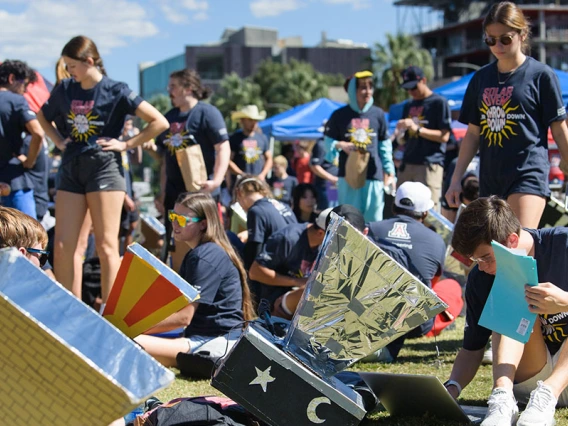Solar Oven Throw Down 2023: Up to the Challenge
Students begin the journey to design-based engineering degrees with confidence.
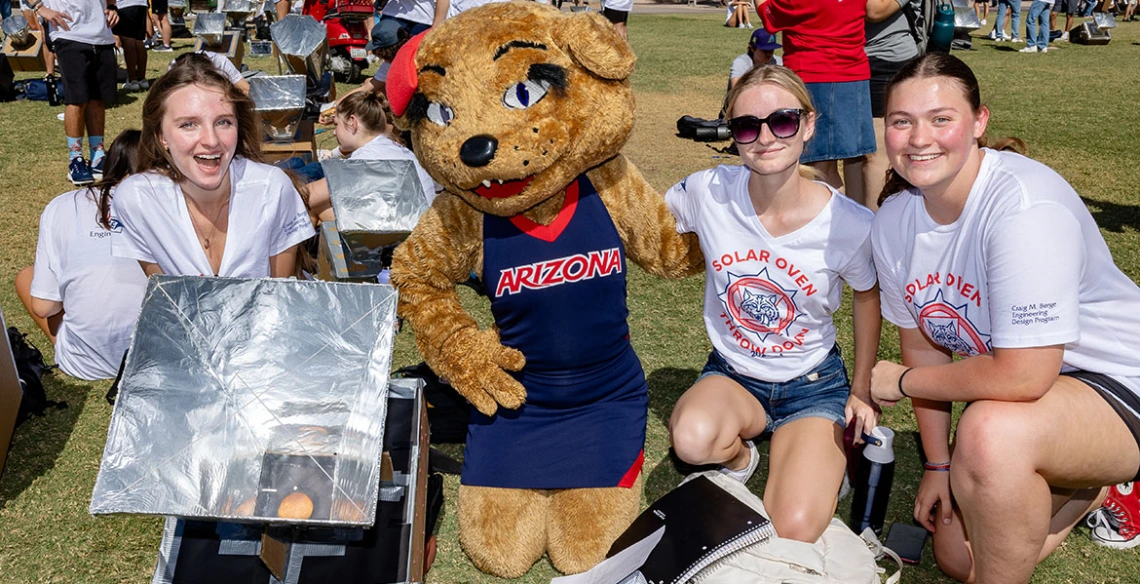
The annual Solar Oven Throw Down is one of the first hands-on design experiences for engineering undergraduates as part of the Craig M. Berge Engineering Design Program. Small teams, typically four students, design and build solar ovens to bake biscuits.
Oct. 12 wasn’t an especially hot day in Tucson. Some cloud cover, a bit of wind and a cooler-than-average high of 85 made solar baking a bit more challenging than might be expected.
Nevertheless, about 650 first-year students, plus 28 students from Salpointe Catholic High School, proved they were up to the challenge. Using ovens constructed from common, low-cost materials such as cardboard and aluminum foil, the students achieved the high temperatures and acrid biscuits of their predecessors.
The award for highest temperature of the day by an individual team went to the Cookie Monsters of adjunct lecturer Kenneth George’s class, whose oven reached 486 degrees Fahrenheit. George is one of several instructors teaching Engineering 102, in which first-year students learn the engineering and mathematical principles foundational to the project and begin the four-year, experience-based Craig M. Berge Engineering Design Program.
“This is one of the hottest readings I've ever seen,” said Byron Hempel, chemical and environmental engineering assistant professor of practice and faculty coordinator for the event.
An award is given at the class level for highest average temperature, and the Engineering 102 class of Sammy Tin, professor and Patrick R. Taylor Endowed Chair of Materials Science and Engineering, won it at 338 degrees Fahrenheit, only 1 degree below last year’s wining average.
Rounding out the class-level awards was one for highest average performance index, a measure of how well the oven’s predicted temperature matched the actual temperature. This went to the class of Ted Trouard, professor emeritus of biomedical engineering.
Learning to accurately predict the performance of a design through modeling and prototyping is an important skill in all areas of engineering, said George.
“Your oven may not be the hottest, but it might have the best model and therefore be the best product,” he said.
For Salpointe Catholic High School teacher Cecelia Gossler, the modeling is her favorite part.
“It shows students how to apply principles of algebra, trigonometry and thermodynamics to predict how their oven will perform and to use that model to guide them in the construction of their ovens,” said Gossler, a UA industrial engineering alum with bachelor’s and master’s degrees.
For the past nine years, Gossler has taught the Engineering 102 High School program at Salpointe. High school students at participating schools can take the UA’s introductory course and get a head start on college credit.
Engineering 102 High School and Solar Oven Throw Down participation help high school students better understand the field of engineering and build the confidence to study it, said Gossler. This is especially true for first-generation college students and minority and women students.
“It can change the perspective of knowing they can do this. They can actually come to college and do engineering. Being here and doing the same project that all the other engineering students do helps them visualize that,” she said.
In the Same Boat With Friends
The Solar Oven Throw Down offers one additional award for an individual team – the “all in the same boat” teamwork award from longtime event sponsor W.L. Gore and Associates. The award aligns with the company’s collaborative culture, said Eva Richter, Gore industrial engineer and 2022 UA graduate in systems engineering.
Richter and her colleagues were looking for students who overcame challenges together.
“We know they’re smart; we know they can think like engineers. But what about their personalities helps them work with others and be a successful team?”
The Gore team chose Redhot, a team that united quickly when one member, Connor Knapp, experienced a concussion while playing intramural flag football. His teammates shouldered the more challenging tasks for the two weeks he needed to recover.
“Their willingness to take on additional responsibilities allowed me to focus on recuperating without worrying about falling behind,” Knapp said. “Their actions not only helped me recover but also solidified our friendship. They are, without a doubt, friends for life, and I sincerely appreciate their support.”
One factor in the win was that Redhot was laughing and having fun at the Solar Oven Throw Down, said Roque Mejia, also a Gore industrial engineer and a 2019 UA industrial engineering graduate.
“They were the most engaged. They weren’t stressed,” he said.


